Big Sustainability
Hard, Visible Challenges Versus Soft, Hidden Ones
By Mark Ciotola
First published on October 23, 2018
Learning objectives:
- The hard physical challenges to sustainability
- The soft challenges that restrict possible solutions
Introduction
Society faces several hard, physical challenges to sustainability, such as greenhouse warming, nuclear war, fossil fuel exhaustion and pollution. Their physical mechanisms as well as how to physically overcome them are well understood. However, there are soft challenges as well, due to social and indirect physical mechanisms that make overcoming hard challenges even more difficult.
The Hard Challenges
Even though most of us know the “hard”, physical challenges faced by society, it is worth reviewing several key challenges.
Global Nuclear War
If most of the nuclear weapons possessed by the superpowers were used, the Earth’s ecosystem would be completely destroyed by the heat, fire and radiation. This can happen faster than it can be stopped, in less than an hour, hence prevention is vital. The world’s major nuclear arsenals are ready to be launched upon a moment’s notice, resulting in the destruction of humanity and most life on Earth. A global nuclear war can be triggered by merely one leader of the three super-powers having a really bad morning.
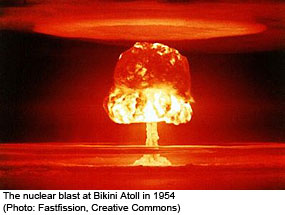
An atomic bomb, such as the one dropped on Hiroshima during World War Two, can wipe out an entire city center. A hydrogen bomb can wipe out an entire state. Many nuclear missiles carry multiple warheads.
- All it takes is one superpower’s leader to have a really bad day.
- Risk x consequence?
- A trivial challenge? If it happens, then there is nothing left to worry about?
- So why should we care?
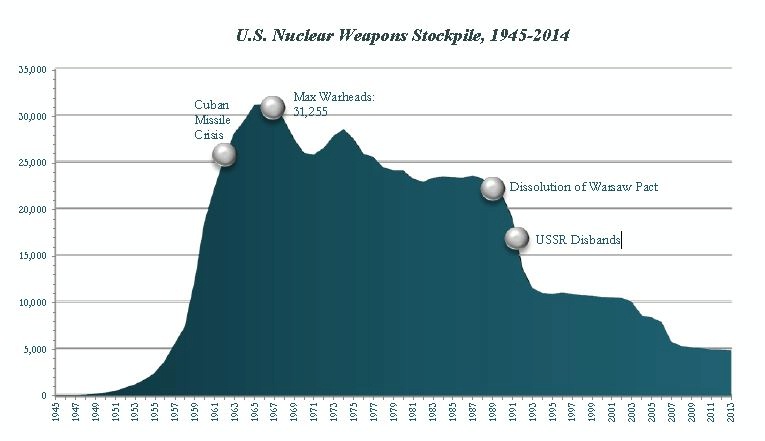
US Nuclear Weapons Stockpile (U.S. Government)
As of September 2013, the U.S. stockpile of nuclear warheads consisted of 4,804 warheads. This number represents an 85 percent reduction in the stockpile from its maximum (31,255) at the end of fiscal year 1967, and a 78 percent reduction from its level (22,217) when the Berlin Wall fell in late 1989. The below figure shows the U.S. nuclear stockpile from 1945 through September 30, 2013. There are still enough nuclear weapons in existence to totally destroy humanity.
Video of an atomic bomb explosion.
Climate Change
The build-up of greenhouse gasses such as carbon dioxide is raising global temperatures thus disrupting many weather- and eco-systems.
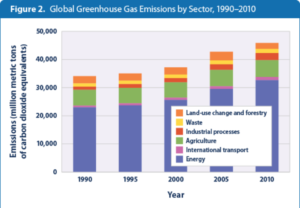
GHG emissions to 2010 (image credit: U.S. Government)
Climate change is a potentially exponential killer. Climate change can result in even greater greenhouse gas emissions, such as by higher evaporation rates and the release of methane from the arctic regions. Such will result in even greater climate change, creating a spiraling effect that can get out of control very easily.
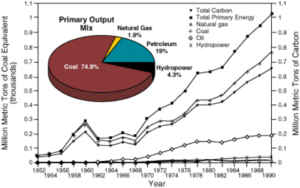
GHG emissions (image credit: U.S. Government)
- Even worse, this temperature rise can release further greenhouse gasses, possibly resulting in a runaway greenhouse effect, such as on 900 °F Venus.
- Does it matter whether caused by humans? If a house gets struck and set on fire by lightning, or starts a forest fire, do we let it all burn down just because lightning is not created by humans?
Environmental destruction
Several aspects of the environment are facing diminishment and destruction.
- Water. Rainfall patterns are changing. Underground reservoirs are being depleted. Human are using more water than some ecosystems can sustainably provide.
- Farmlands. Soil is being eroded. Much prime farmland is being paved over for homes and roads.
- Rainforests, especially in tropical regions such as South America and Southeast Asia, are being cut down for farming. Often these farms are very temporary due to poor soil. The rainforest often does not regrow after its destruction.
- Many species of plants and animals are endangered. When they become extinct, a gap in the eco-system is created, and biodiversity is lost.
Pollution
Pollution covers so many areas that it deserves special mention. Just as humanity can run out of nonrenewable resources, it can create “negative” resources. Often negative resources are disproportionately dangerous. A human needs a lot of food, but can be killed by a tiny amount of poison or biomaterial.
The build-up of toxins and waste in the environment is making parts of the Earth unsuitable for human, animal and plant life. Sources of pollution include:
- Pesticides
- Household chemicals
- Mining waste
- Plastics
- Biohazard waste
- Nuclear waste
Indicators
- Greenhouse gasses
- Toxin readings
- Plastics in ocean
- Rainforest destruction rate
Refugees and Displaced Persons
Each year, millions of people are having to leave their homelands due to violence, poverty, political oppression and climate change. As of this writing, there are 65.3 million refugees and other displayed persons (UNHCR 2016). With the fall of Aleppo and the fight over Mosul, these numbers could increase. Countries that take in many refugees and displaced persons can receive both benefits and incur challenges:
- Add new capabilities and diversity
- Overwhelms local social bonds and customs
The governments of several western democracies are falling due to populist pushback against accepting refugees and other immigrants. Disruption is a trendy goal these days. Yet is disruption always good for everyone? Do we care?
Energy Supply
The energy supply is sufficient for current use, except that current sources result in tremendous production of greenhouse gasses. Persons in developing countries could certainly use more energy locally, especially cooking fuel and electric power. (The terms energy and power are often used synonymously, but are defined more precisely elsewhere.)
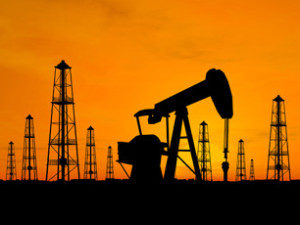
Petroleum drilling rigs and pump (U.S. Govt.)
However, the fossil and nuclear fuels upon which our contemporary society depends are nonrenewable, so that our current rate of use of fossil fuels is not sustainable.
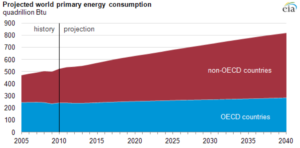
Energy supply (credit: U.S. govt.)
Hard Challenges As Superficial Challenges?
These hard challenges are real, physical issues. They are not figments of our imagination, and solutions must follow the laws of physics. However, the impediments to solving these challenges are often social and psychological. We could reduce climate change if enough of society has enough will to do so. Hence, many hard, physical challenges are in essence “soft” psychological ones.
- What are the root causes of these challenges?
Soft Challenges
Most hard challenges can be overcome, if one can overcome the soft challenges behind them.
Soft Challenges—Level 1
Let us call Level 1 soft challenges that represent the first level of getting people to accept sustainability challenges and modify their behavior appropriately. Some Level 1 soft challenges include:
- Getting people to recognize and accept problems, despite their personal and cultural biases.
- Once problems are recognized, getting people to take sufficient action
- Trying to get people to work together to holistically overcome problems
- Overcoming the effects of game theory and the raising of the commons, where people discount problems to justify individually-selfish behavior that makes the problem worse
Soft Challenges—Level 2
Let us call Level 2 soft challenges that represent challenges that represent medium-term physical and social forces that are not generally recognized but that have a significant medium-term effect upon sustainability. Examples include:
- Historical forces
- Thermodynamic forces upon society
« Understanding Ourselves | COURSE | Energy and Thermodynamics »